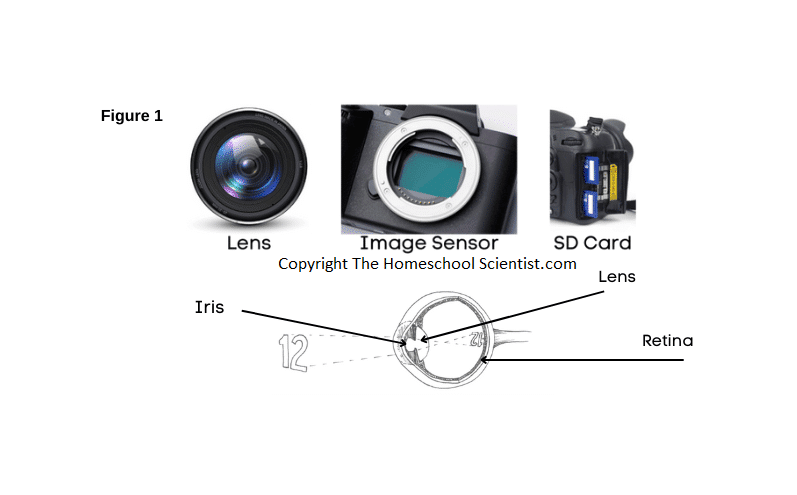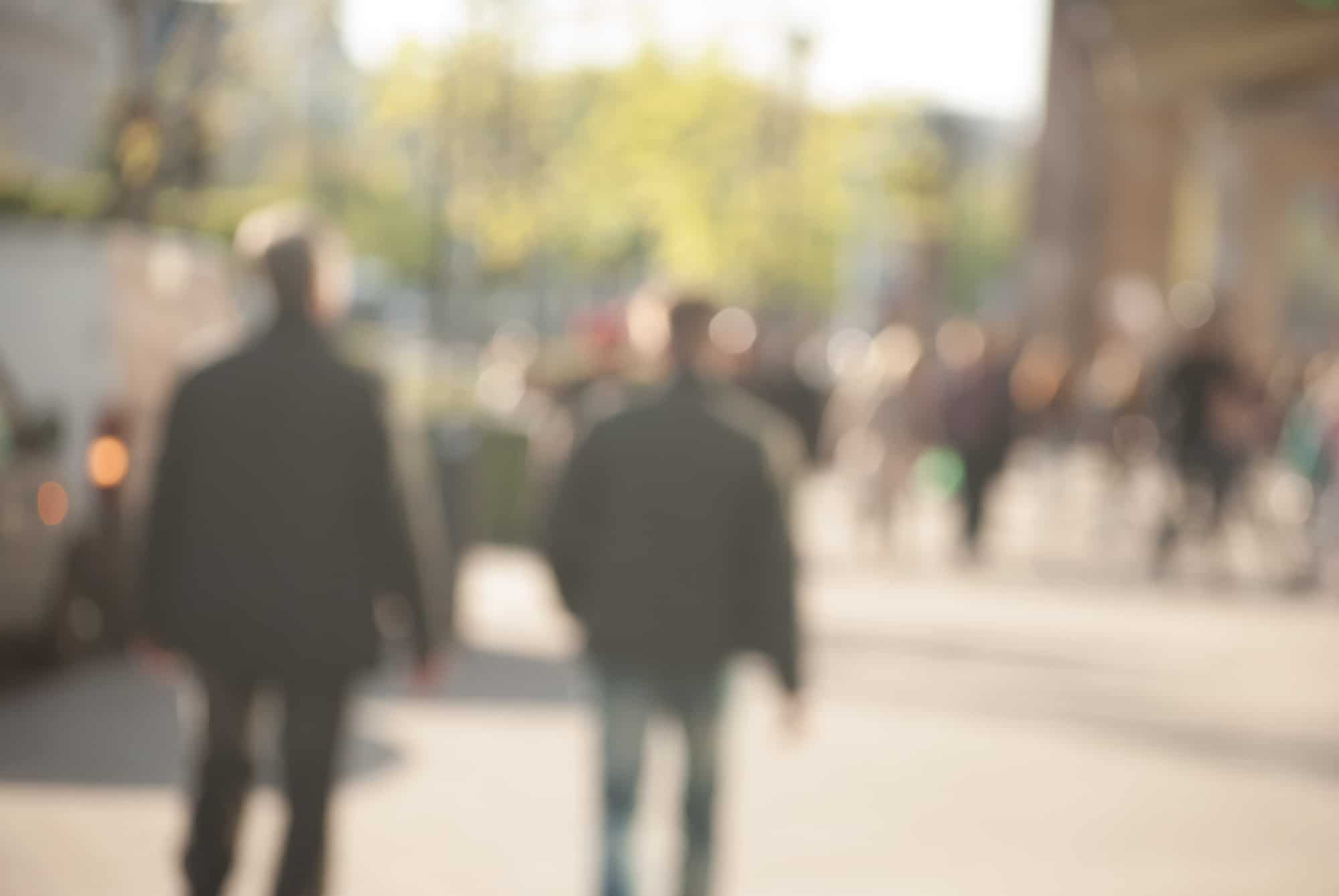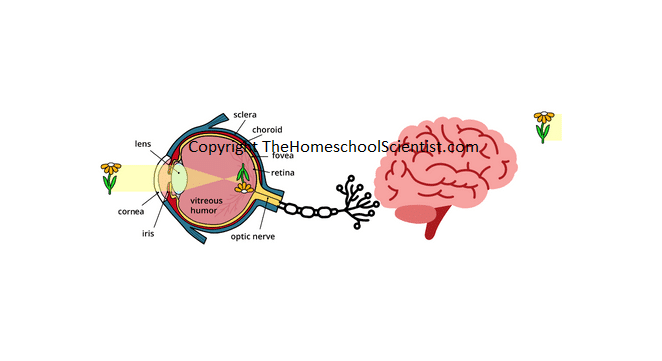Parts of the Human Eye – Teaching Resources
Posted by admin on
Do you know what goes on in your eye and brain when you watch a movie, read a book, or look out a window?
Let’s look at how a camera works to help us understand how our sense of sight works. A camera needs three parts to function correctly. These are a lens, an image sensor, and an SD card. Your eye is similar to a camera. It needs an iris, lens, and retina to work correctly.
The lens of a camera controls the amount of light entering the camera. If too much or too little light is allowed to reach the film, the final picture will turn out too dark or too light.
The iris of your eye works like the lens of the camera. The iris controls the amount of light entering your eye.
Have you ever walked outside on a sunny day and had to squint because the light was so bright? This is because your iris did not have enough time to adjust the light it was allowing into your eye.
The iris contracts or tightens when exposed to bright light. This contraction of the iris causes the opening in the middle of your eye, known as the pupil, to become much smaller. When you enter a dark room, your pupil will look larger because the iris is dilating, or expanding, to allow more light into the eye. It is important to have the proper amount of light to see clearly.
The camera’s image sensor is adjusted to focus the light coming into the camera. The image will be blurred if the image sensor does not focus correctly. Have you taken pictures that came out blurry?
The lens of your eye works in much the same way. It takes the image being sent into the eye and focuses it onto the back wall of the retina. The image reaches the retina inverted 180 degrees (upside down) from its original position. In figure 1 the number 12 is upside down when it reaches the retina.
The third major part of the eye is the retina. It acts much like the SD card in a camera where the image is recorded. The retina is a thin lining on the inside back wall of the eye. Special cells on the retina change the light received into electrical signals. These cells are called rods and cones. We’ll learn more about these later.
The retina sends these signals to the brain through the optic nerve. The part of the brain that processes the signals is called the visual cortex. Our brain then corrects the image (turns it right side up) to its original position, allowing us to recognize what we see.
Parts of the Eye and Human Eye Lessons & Worksheets
Download the FREE 55+ page Human Eye lesson for multiple grades. We’ve included printables for preschool-kindergarten. This unit has 16 activities covers:
- Eye anatomy – with three levels of worksheets for early elementary, older elementary, and middle and high school.
- How our sense of sight works
- Reading comprehension and vocabulary activities, flashcards, worksheets
- Rods and Cones – with a hands-on demonstration and data gathering activity
- Make a model of the eye
- Make Benham Disks
- Visual Impairment
- Braille – make your own braille cards
- Guide dogs





